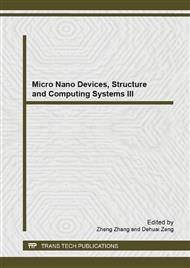p.47
p.54
p.59
p.67
p.73
p.79
p.84
p.89
p.95
Applying of Piston Mechanism Design Used in the Wavelength Electrical Generating of Ocean for Fishing Communities
Abstract:
Pneumatic mechanism widely used in industrial, automotive, aerospace, and etc. The principle of pneumatic like piston is move up and down due to the air pressure inside the piston. Mechanism of piston can be applied to the power plant that utilizes the ocean waves where as use of piston mechanism is very helpful in solving the problem of fossil fuel scarcity as a source of energy in power plants. In this study we will focus on the pneumatic system which utilizing ocean wave that moves longitudinally to encourage buoy that located on the piston shaft to up and down and then the pressing of air out of piston. Output of the piston will be forwarded to the generator (rotor and stator) to produce a voltage. In this paper is focused on the manufacture of pneumatic systems and processes to produce the rotation and voltage. Material of piston tube component made of aluminum and rubber, buoys made of plastic and generator such as of metal and copper coils. Output of the piston will be forwarded to the generator (rotor and stator) to produce a voltage. In this paper is focused on the manufacture of pneumatic systems and processes to obtained the rotation and voltage with aluminum for piston tube material, buoys made of plastic and magnet rotor and copper coils of stator include on the generator and get the results of ocean wave power plant using piston mechanism is 1400 rpm with a voltage of 36 volt.
Info:
Periodical:
Pages:
73-78
Citation:
Online since:
April 2014
Authors:
Keywords:
Price:
Сopyright:
© 2014 Trans Tech Publications Ltd. All Rights Reserved
Share:
Citation:


